—Dr. Ashley Wagner, Ph.D., Equinutrix Nutrition
Horses have evolved as grazing animals, which means they are designed to continually consume forage; historically, this was in the form of fresh grass. Fresh pasture is an ideal forage source for many reasons:
- Beneficial Nutrient Profile
- Exercise that occurs from grazing
- Consuming forage at ground level increases saliva production (saliva is a great buffer of stomach acid!)
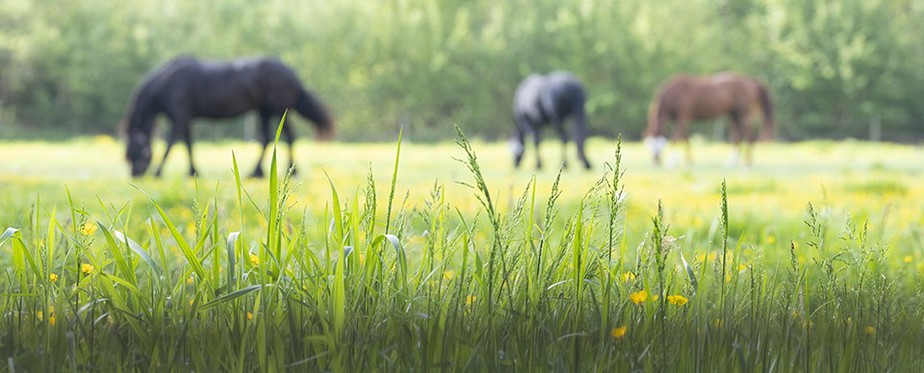
However, spring pasture may not be the ideal source of forage for horses that are overweight or prone to certain metabolic conditions. In the spring, grasses grow rapidly and the environmental conditions are ideal for non-structural carbohydrates (NSC = sugar+starch) production. Extended hours of daylight promote photosynthesis and NSC production, and cool nighttime temperatures (below 40⁰ F) can stall the plant’s ability to use the NSC for growth.
If the NSC aren’t used for growth, they accumulate in the plant, and due to this very common temperature cycle seen in many parts of the country during spring, NSC levels in the grass become the highest in the late afternoon and early evening. High amounts of NSC can become a major threat for horses, especially those that suffer from metabolic diseases such as Equine Metabolic Syndrome (EMS) and Equine Cushing’s Disease (PPID).
When horses consume large amounts of sugar-rich spring grass, there is the possibility of overwhelming the digestive tract’s ability to digest NSC. In this situation, the undigested or partially digested NSC spill over into the hindgut, which can disrupt the normal balance of the hindgut microbiota. The digestion of the additional NSC by bacteria in the hindgut results in a production of a strong acid called lactic acid and leads to a drop in the pH of the digesta.
Unfortunately, the hindgut microbiota do not thrive in an acidic environment, and these microorganisms begin producing toxins that are absorbed into the horse’s bloodstream through a leaky gut. If all of that wasn’t bad enough, there is also a rise in inflammation in the horse’s body. Luckily, horses with normal metabolism typically do not exhibit any external symptoms of this chain of digestive events with the exception of a period of loose manure.
EMS or obese horses have different responses to this situation than their metabolically normal counterparts for two reasons:
- High levels of circulating inflammation being produced from their fat tissue, and
- The population of their hindgut microbiome is different (and the strains more prevalent in the obese or EMS horse have been linked to the markers of this metabolic disorder!)

The strains of microorganisms found in the hindgut of the obese horse are more susceptible to the chain of digestive events described earlier which is one of the reasons it is important to feed a low NSC diet. The concern for over-consumption of NSC leading to a laminitic episode is due to the rise in inflammation following consumption of NSC coupled with the high levels of inflammation already circulating in the body—too much inflammation can lead to a laminitic episode! Unfortunately, everything a horse eats has some level of NSC, and while we can look for low NSC commercial feeds, pasture is a bit trickier, considering it makes up a large portion of many equine diets!
So, if we have been describing your horse, how do you manage them safely since everything horses eat has some level of NSC? The first component of the diet is forage. Remember, horses evolved as grazing animals, so that’s where you start. The strictest method is a dry lot and slow-feed hay net. The hay can be tested so you know you are feeding a safe level of NSC. Horses consume forage at approximately 2% of body weight per day. If the goal is weight loss, then consider feeding 1.5% of body weight per day, but be sure to consult a veterinarian or equine nutritionist on the specifics of your horse’s diet.
If a dry lot is not an option, then altering your management is a great course of action. Muzzles are your friend. Muzzle use in both ponies and horses has been scientifically researched to reduce intake of forage while on pasture. Another method is to reduce turnout time to hours when the NSC is at its lowest or at the very least avoiding turnout when it is at its highest. The NSC was found to be highest in the Mid-Atlantic region of the US from 3-6 pm.
Now that we have addressed the forage portion of the diet, do we need to consider anything else? Yes. Even if your horse seems able to maintain his weight on forage alone, don’t forget to supply a low-NSC ration balancer to make sure your horse’s daily nutrient requirements are being met. And remember, all horses are individuals. These are rules of thumb, but consult a veterinarian or an equine nutritionist for specific dietary and medical advice.
What about supplements?
There are a number of supplements on the market that are targeted towards metabolic horses. However, it is always important to do your homework when considering these options and consult with a nutritionist and/or veterinarian. Horses are hind-gut fermenters, so if the research was only completed in mice, humans, or pigs, it may not have the same efficacy in horses.
Equinutrix’s Starch Guard™ was developed and researched in partnership with many equine nutritionists at various universities and is recommended for horses that are obese or otherwise prone to metabolic issues. Starch Guard™ is best described as a supplement for the microbes in the hindgut of horses. The research performed on Starch Guard™ has demonstrated that it is effective at mitigating many of the problems of starch consumption at the microbiome and whole-body levels.
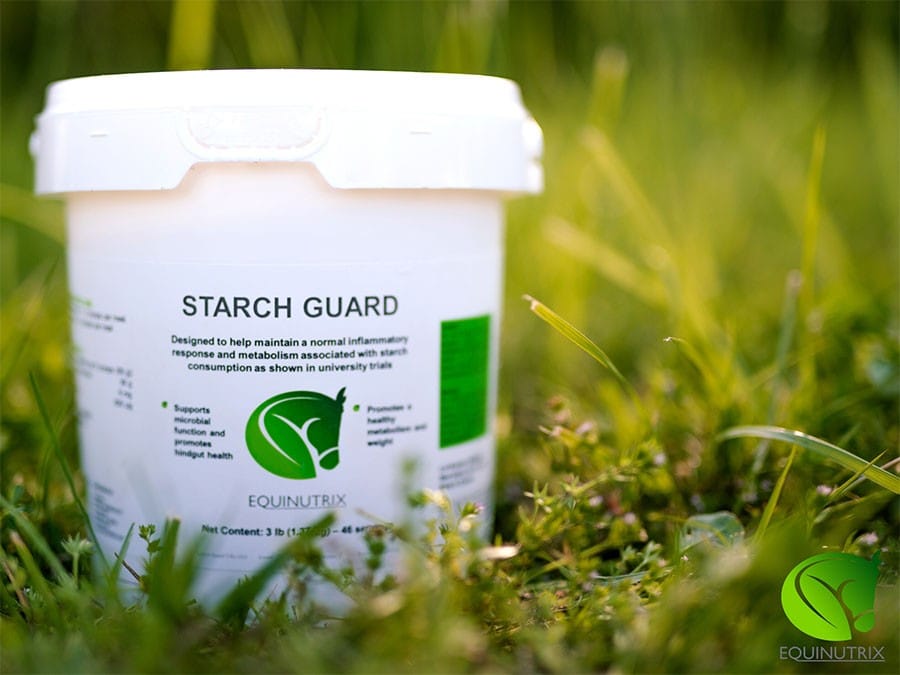
On the microbiome level, Starch Guard™ prevents the pH of the digesta from dropping into the acidic range via two mechanisms:
- Starch Guard™ has ingredients to buffer the acid being produced and
- Starch Guard™ alters the way the microbes digest NSC so that a weaker acid, propionic acid is produced in place of the strong acid, lactic acid. As a result, the production of toxins is reduced, fewer enter the bloodstream, and the rise in inflammation is lessened
The circulating inflammation associated with obesity impairs insulin and glucose metabolism leading to insulin dysregulation associated with EMS. Because Starch Guard™ interrupts the cycle of inflammation originating in the gut, there is also a reduction in whole-body inflammation and an improvement in insulin sensitivity. Long-term use has also shown the potential for weight loss.
Starch Guard™ is ideal for ponies, donkeys, miniature horses, horses that are obese, horses with insulin dysregulation, horses with EMS and PPID, and metabolically normal horses eating a high starch diet or metabolically normal horses that are faced with seasonal changes in pasture NSC content.
Depending on your horse’s individual risk factors, Starch Guard™ may be needed seasonally or year-round and can be added to the ration at a higher dose in the face of a laminitic event and in combination with other medications your veterinarian may have prescribed. Starch Guard™ is backed by university research and is safe for competition.
Starch Guard™ may be purchased online at www.equinutrixnutrition.com. Interested readers of EQuine AMerica magazine may use promo code HEALTHY21 for a 15% discount on their first purchase of Starch Guard™ (any size except sample size).
Check out more articles from Dr. Ashley Wagner, PhD.
Dr. Ashley Wagner obtained her Doctorate in Equine Nutrition from the University of Kentucky and went on to work in new product development in the feed and supplement industry. She founded Equinutrix Nutrition Solutions to meet what she saw was an industry need for supplements with scientifically proven efficacy in horses. Her involvement in research has led to numerous co-authored scientific articles, abstracts, and speaking engagements.



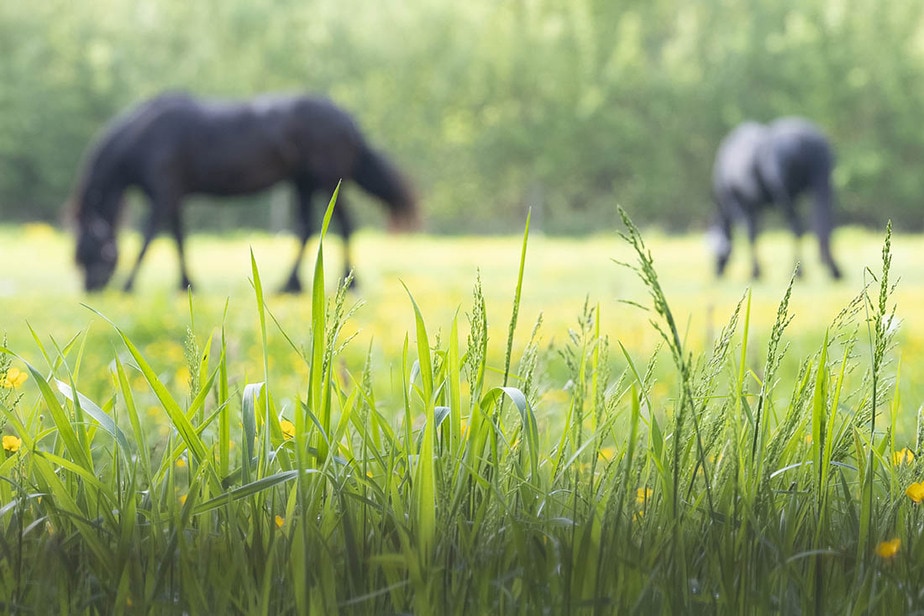

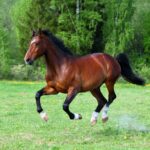
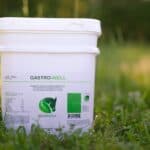




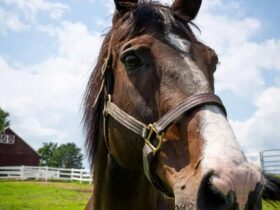



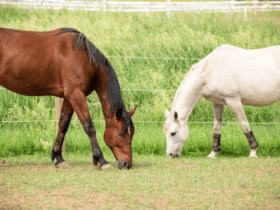




SOCIAL